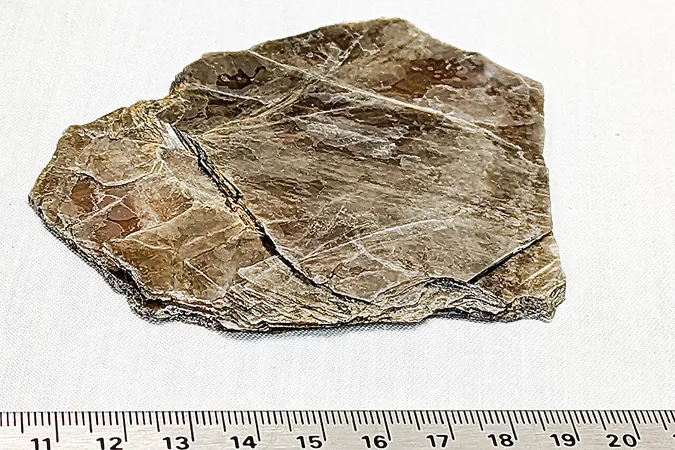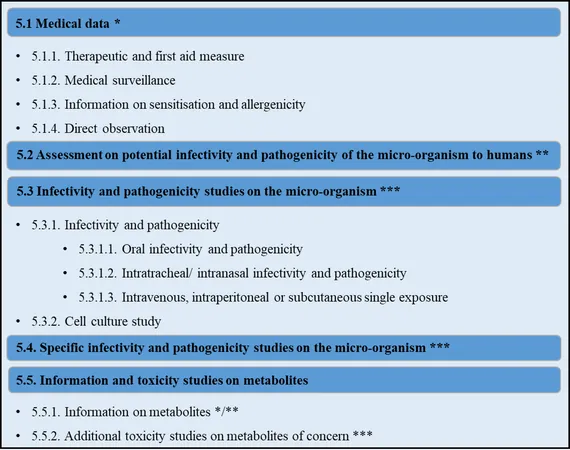
Breakthrough in Material Science: Earthquake Insights Revolutionize Understanding of Material Failure!
2024-11-06
Author: Liam
Introduction
In a groundbreaking study, materials scientists have unlocked new methods to assess how environmental factors affect the degradation and eventual failure of materials used in advanced technologies. This intriguing research, orchestrated by the University of Illinois Urbana-Champaign in collaboration with Sandia National Laboratories and Bucknell University, reveals parallels between the behaviors of certain minerals and the phenomena of earthquakes and avalanches.
Publication and Key Findings
Published in the prestigious journal *Nature Communications*, the research highlights how stress-induced deformation in muscovite mica—a common mineral—follows a statistical pattern similar to that observed during seismic events. This vital discovery is poised to reshape our understanding of materials crucial for solar panels, geological carbon capture, and infrastructure, including everything from highways to skyscrapers.
Importance of Understanding Material Interaction
As scientists aim to select optimal materials for engineering, understanding their interaction with environmental conditions becomes paramount. For geologists, the depletion of rock strength along fault lines through chemical reactions exacerbates the risks of sudden structural failures, a process termed chemomechanical weakening.
Research Methodology
“Traditional methods for quantifying the impact of chemomechanical weakening in engineered materials often rely on intricate molecular dynamics models that demand extensive computational resources,” explained graduate student Jordan Sickle, the study’s lead author. “Our innovative approach instead highlights the significance of connecting lab experiments to real-world events like earthquakes.”
Experimentation with Muscovite
The unique choice of muscovite for this study was driven by its remarkable flatness; each flaky layer is flat down to the atomic level, emphasizing the importance of environmental interactions. To investigate the effects of chemomechanical weakening, samples of muscovite were subjected to various chemical environments, including dry air, deionized water, and salt solutions at pH levels of 9.8 and 12. A specialized instrument known as a nanoindenter was then used to apply controlled mechanical loads and measure the material's response.
Results and Implications
The results were illuminating: muscovite exhibited greater resistance to deformation under dry conditions compared to wet ones. When subjected to basic solutions, the mineral’s surface weakened, which resulted in reduced energy storage capacity before failure—a finding that aligns with the burst statistics observed in earthquake data.
Conclusion and Future Directions
“This research represents a significant leap forward, allowing scientists to gauge material failure more efficiently than previously possible,” Sickle remarked. “By utilizing existing statistical models from earthquake research, we can now conduct higher-throughput analyses of materials, paving the way for faster advancements in engineering and materials science.”
As the implications of this research unfold, it promises not only to improve the design and resilience of critical infrastructure but also to enhance our understanding of natural disasters and their effects on both materials and environment. This confluence of geology and materials science signals an exciting new era for researchers and engineers alike. Stay tuned, as the impact of this study reverberates far beyond the lab!









 Brasil (PT)
Brasil (PT)
 Canada (EN)
Canada (EN)
 Chile (ES)
Chile (ES)
 Česko (CS)
Česko (CS)
 대한민국 (KO)
대한민국 (KO)
 España (ES)
España (ES)
 France (FR)
France (FR)
 Hong Kong (EN)
Hong Kong (EN)
 Italia (IT)
Italia (IT)
 日本 (JA)
日本 (JA)
 Magyarország (HU)
Magyarország (HU)
 Norge (NO)
Norge (NO)
 Polska (PL)
Polska (PL)
 Schweiz (DE)
Schweiz (DE)
 Singapore (EN)
Singapore (EN)
 Sverige (SV)
Sverige (SV)
 Suomi (FI)
Suomi (FI)
 Türkiye (TR)
Türkiye (TR)
 الإمارات العربية المتحدة (AR)
الإمارات العربية المتحدة (AR)